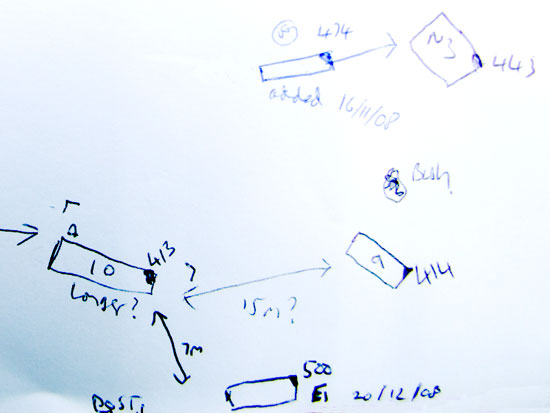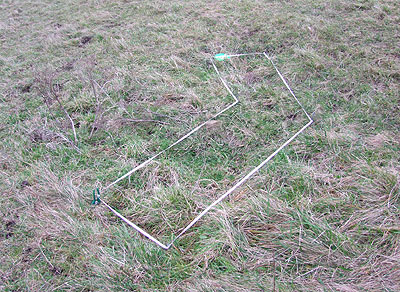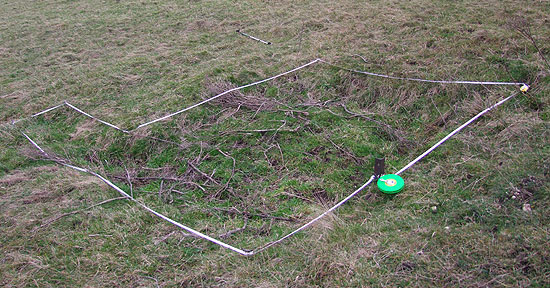Shape-changing trench
Posted: 21 December 2008 22:10
A return visit to a Downsforce location revealed six new slit trenches and one that had changed shape since I last saw it...
When I say it had changed shape, this isn't strictly true; I had in fact incorrectly recorded it first time around, although in my defence I offer the accompanying field sketch below. The one to the left (numbered 10) bears a note to self: "Longer?"

My first impression of this trench had been made when the vegetation was much higher, and the size of the trench was obviously worth my recording as unusual.
A quick explanation of my sketch; a corner of a trench blacked out with a number in the 400-500 range denotes a waypoint marked in my GPS. I mark the corner in order to try and get a more precise bearing and distance between trenches in order to plot them more accurately.
When I was wandering across this piece of ground, I came across a trench I was sure was new to me, but wasn't sure which ones nearby I had already mapped out.

After consulting my sketch map, I identified what I previously numbered as trench 10 (GPS no.413) from the "L" shaped and bell-like markings on the sketch; these indicate the presence of one angle-iron picket and some sort of metal ring set in the ground. The reason I didn't initially recognise this trench is due to the fact that it appears to be L-shaped, and not a standard straight trench as I had previously thought.
I eventually established that trench E1 (at the bottom, GPS no.500) was the new trench and added it to the sketch, getting the date wrong in the process.
Having sorted out this confusion I moved along the high ground and to what I believe to have been a Vickers gun trench (below). I've seen several of these in the area and they seem to cover large areas of open ground and the flanks of infantry positions; there appears to be a flanking position presumably for the gun commander.

I then trekked back to where I had found more trenches last week and conducted a wider search of the undergrowth, uncovering a fresh batch of trenches, all partially or completely infilled with only their size and shape to indicate their original purpose.
One trench I found was stranded in the middle of nowhere, 40m east of what I believe was a platoon locality and 75m away from another position. It had no obvious supporting trenches that I could find, but an inconvenient point is that these trenches I've been finding weren't necessarily all in use simultaneously; it is quite likely that some trenches were dug and later back-filled whilst new ones were dug.
The area was also part of the South Downs Training Area, so all manner of activity was likely; it certainly leaves me with many questions that I'll probably never be able to answer.
- Pete

Email:
Blog Latest

Bishopstone reveals its pillbox secrets
18 October 2021

Pillbox or Observation Post?
10 June 2020

Uncovering the hidden secrets of a pillbox
8 June 2019

Review of 2018
31 December 2018

Wartime Christmas in East Sussex (2)
24 December 2018
Jargon-buster
Platoon locality
A defended locality intended to be held by a platoon.
Slit trench
Small, narrow trench designed to provide protection against shrapnel and other battlefield hazards. Technically distinct from a weapon pit (which was intended soley as a defensive position) slit trenches were also used as defence works.
This site is copyright © Peter Hibbs 2006 - 2024. All rights reserved.
Hibbs, Peter Shape-changing trench (2024) Available at: http://pillbox.org.uk/blog/216593/ Accessed: 27 July 2024
The information on this website is intended solely to describe the ongoing research activity of The Defence of East Sussex Project; it is not comprehensive or properly presented. It is therefore NOT suitable as a basis for producing derivative works or surveys!